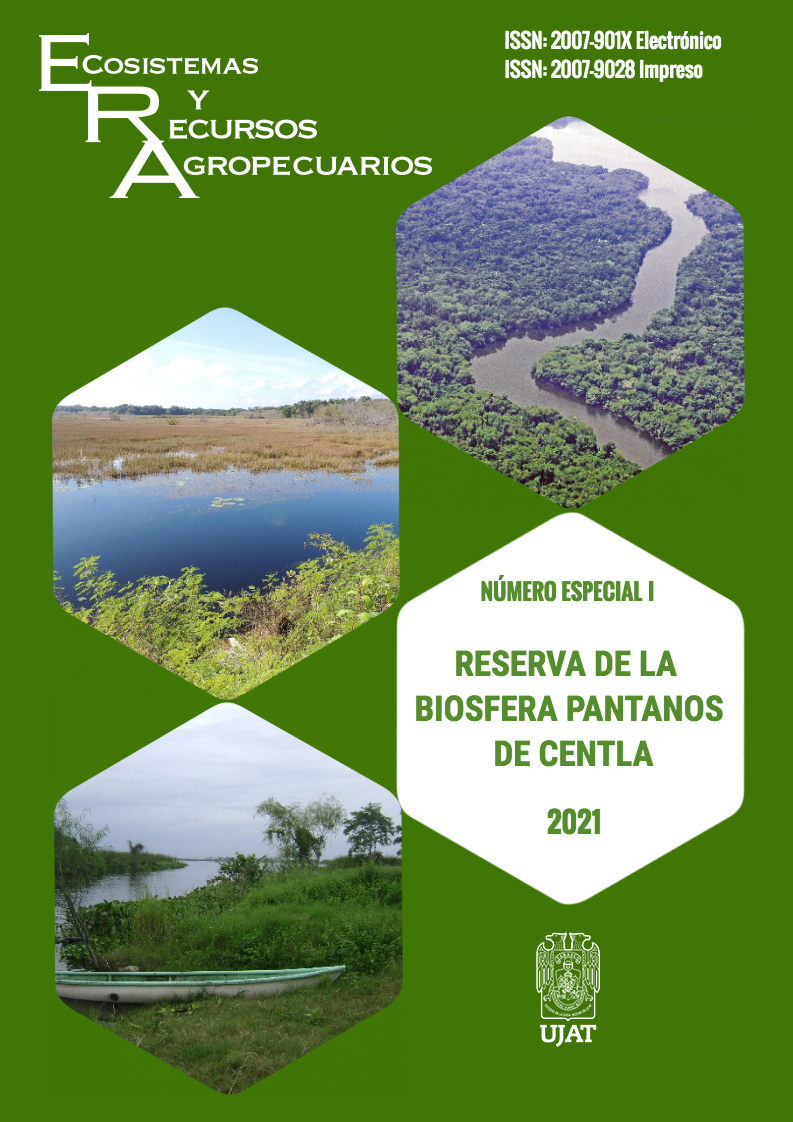Population state of black saraguato monkeys (Alouatta pigra) in the Biosphere Reserve of Pantanos de Centla
DOI:
https://doi.org/10.19136/era.a8nI.2672Keywords:
censo poblacional, habitat, estado de conservación, primates silvestres, áreas naturales protegidas.Abstract
Wildlife conservation requires performing actions based on the
size, composition, and distribution of their populations. This information, however,
is incomplete or outdated for many areas of great biological importance. The goal
of this study was counting the Black saraguatos (Alouatta pigra) in the Biosphere
Reserve of Pantanos de Centla (BRPC) to determine their population status. The
Reserve was divided into three zones that were censused in 2015, 2016, and 2018
by six community monitoring groups. A total of 1 929 saraguatos were counted,
of which 57 were solitary individuals and the rest of them were grouped into 362
troops with an average size, and standard deviation, of 4.6 ± 2.6 individuals.
More than 60% of troops were formed by an adult male, one or more females,
and immature individuals. The sex ratio between adult males and females was
1:1.2 and the ratio of immature individuals to adult females was 1:1. These results
suggest that troop size and composition were representative of the species, while
population parameters were within the ranges reported for populations in conserved
and fragmented forests. This is the first complete census carried out in a large and
difficult to access area, which emphasize the local people involvement as a strategy
that offers advantages during the primate population censuses.
Downloads
Downloads
Published
Issue
Section
License
Copyright (c) 2020 Ecosistemas y Recursos Agropecuarios

This work is licensed under a Creative Commons Attribution-NonCommercial-ShareAlike 4.0 International License.
Aviso de copyright
Los autores que se envían a esta revista aceptan los siguientes términos:
una. Los autores conservan los derechos de autor y garantizan a la revista el derecho a ser la primera publicación del trabajo con una licencia de atribución de Creative Commons que permite a otros compartir el trabajo con un reconocimiento de la autoría del trabajo y la publicación inicial en esta revista.
B. Los autores pueden establecer acuerdos complementarios separados para la distribución no exclusiva de la versión del trabajo publicado en la revista (por ejemplo, en un repositorio institucional o publicarlo en un libro), con un reconocimiento de su publicación inicial en esta revista.
C. Se permite y se anima a los autores a difundir su trabajo electrónicamente (por ejemplo, en repositorios institucionales o en su propio sitio web) antes y durante el proceso de envío, ya que puede conducir a intercambios productivos, así como a una cita más temprana y más extensa del trabajo publicado. (Consulte El efecto del acceso abierto).


